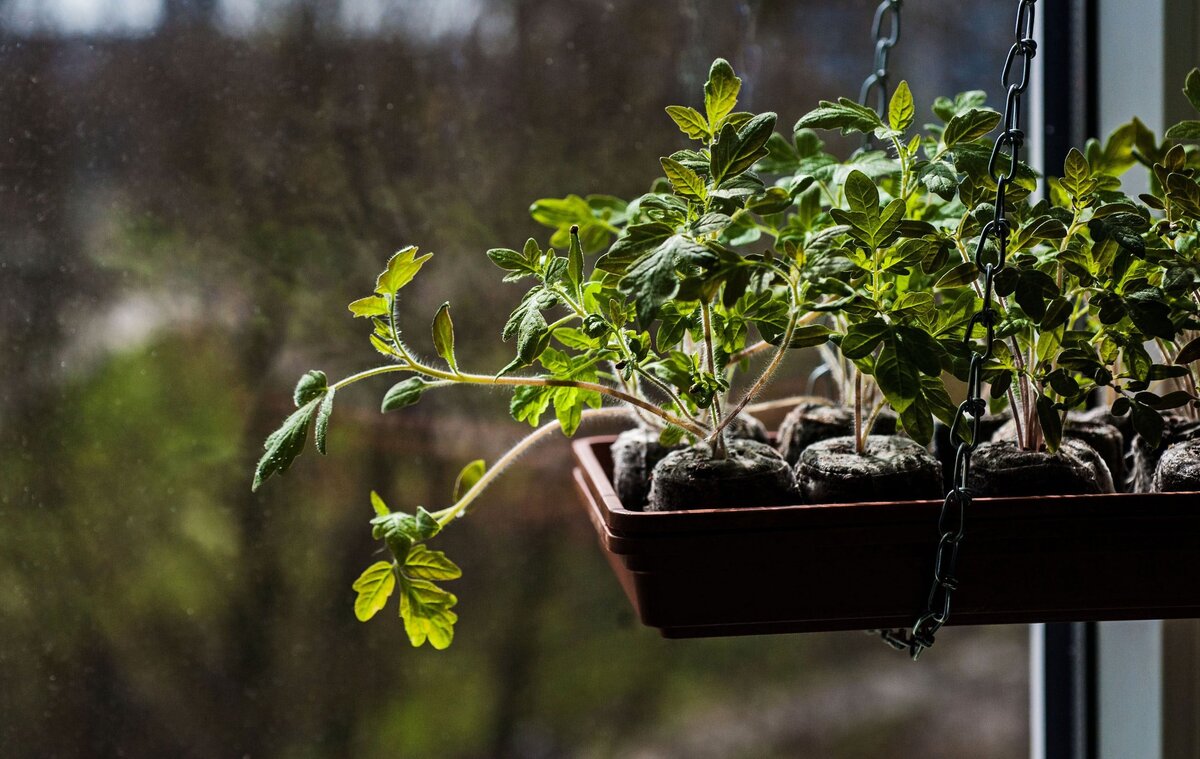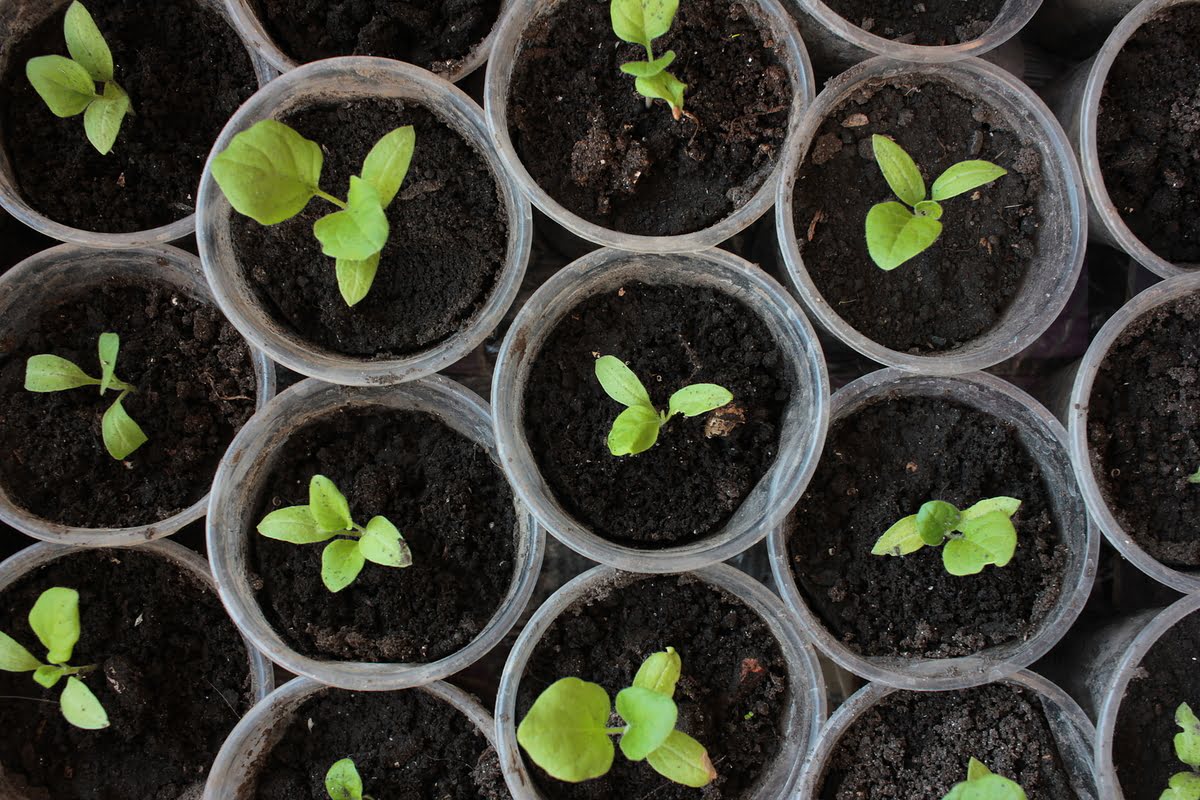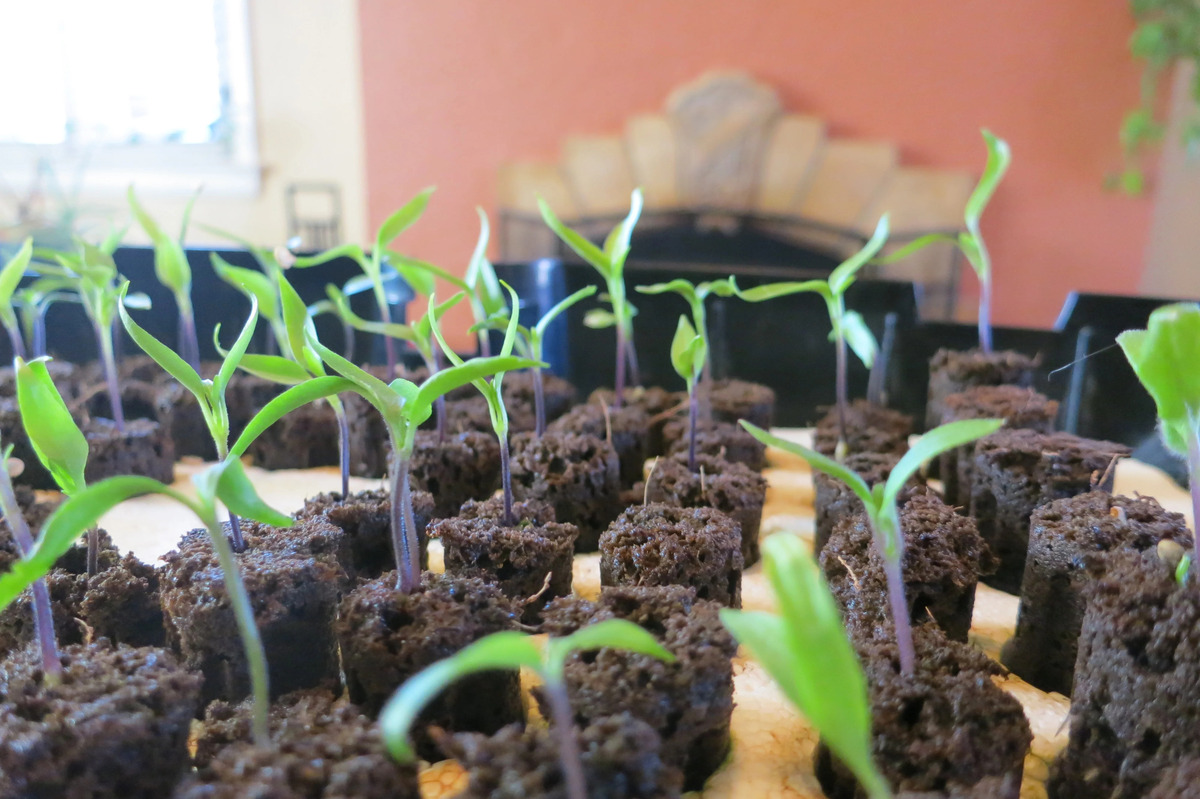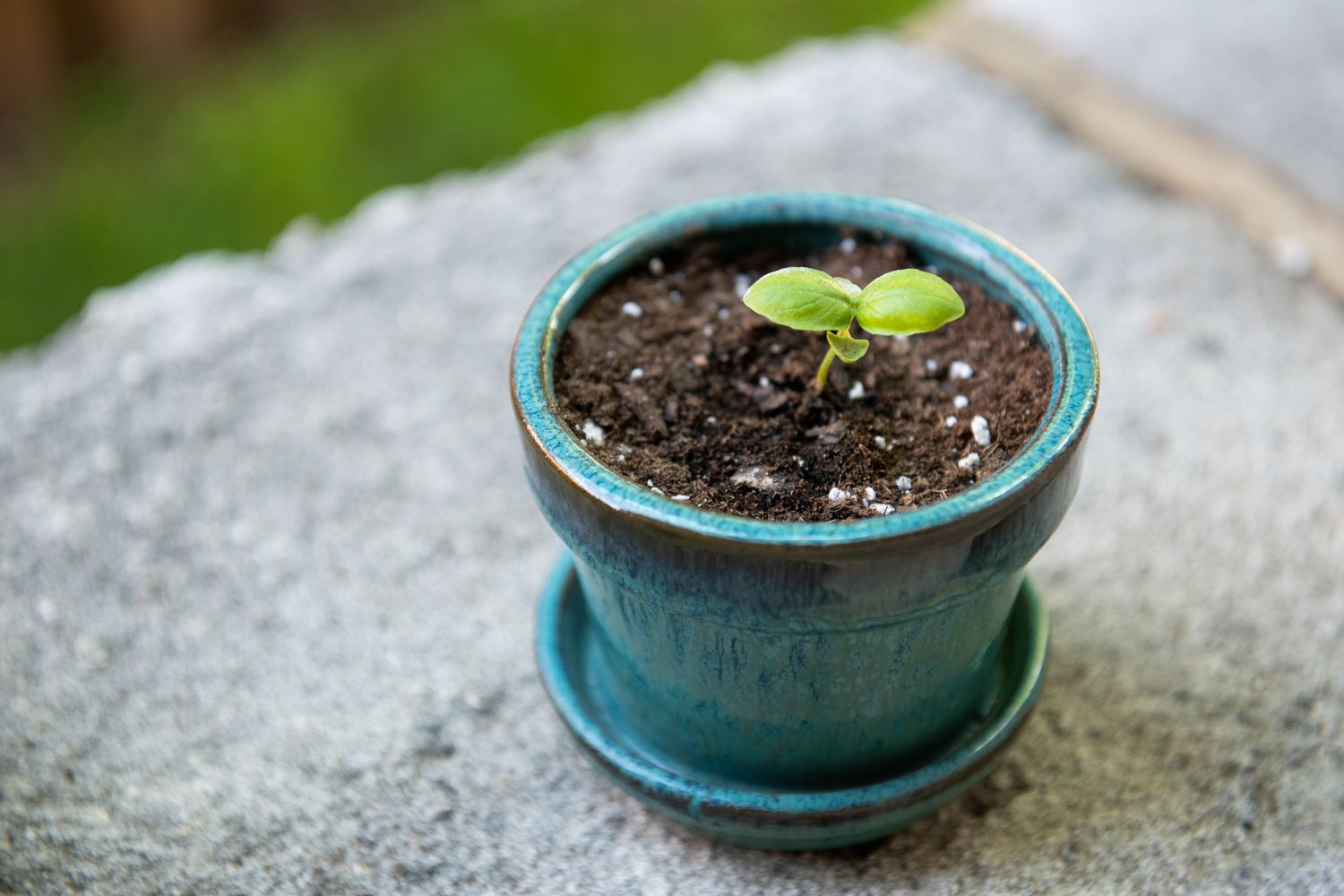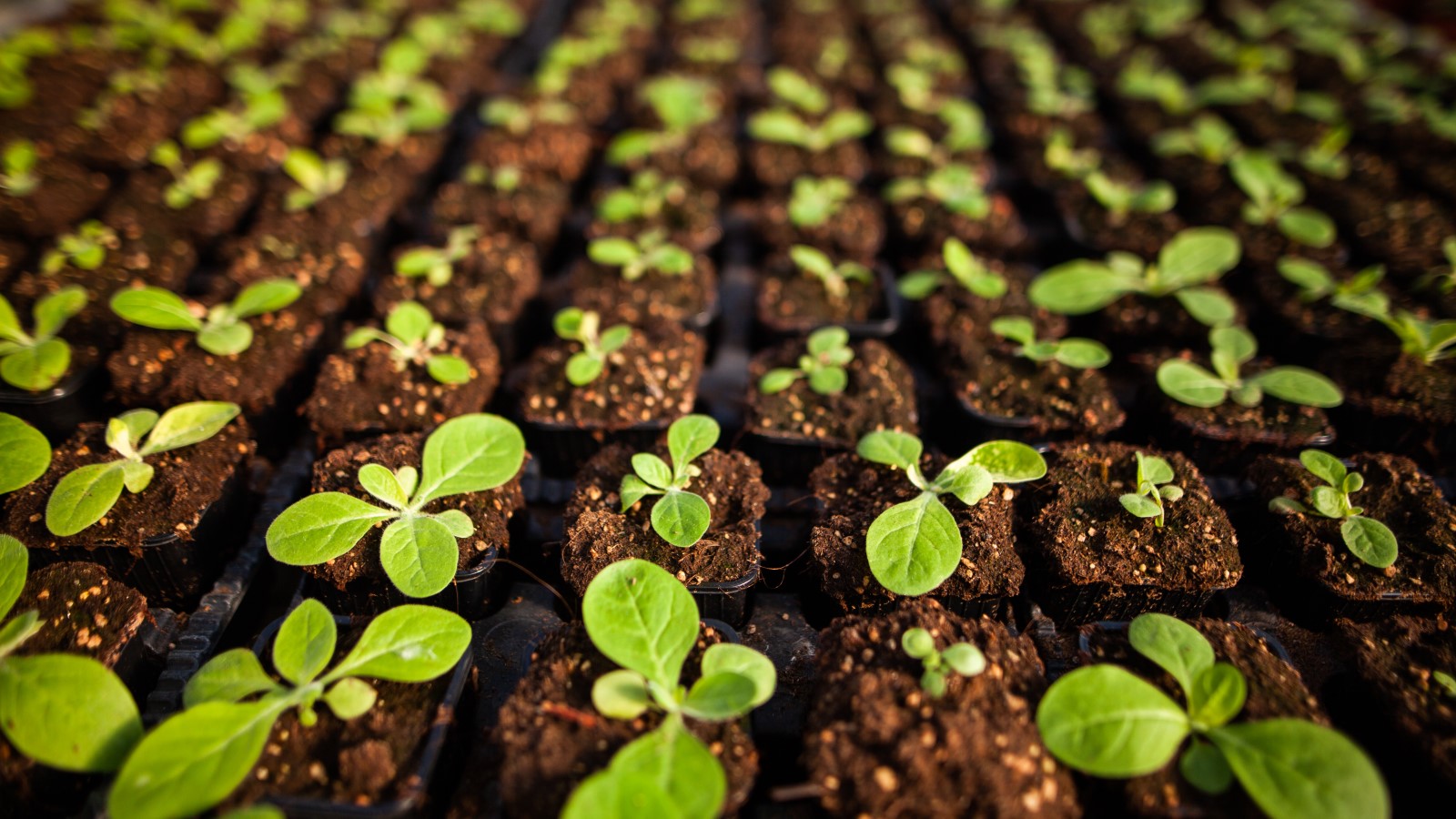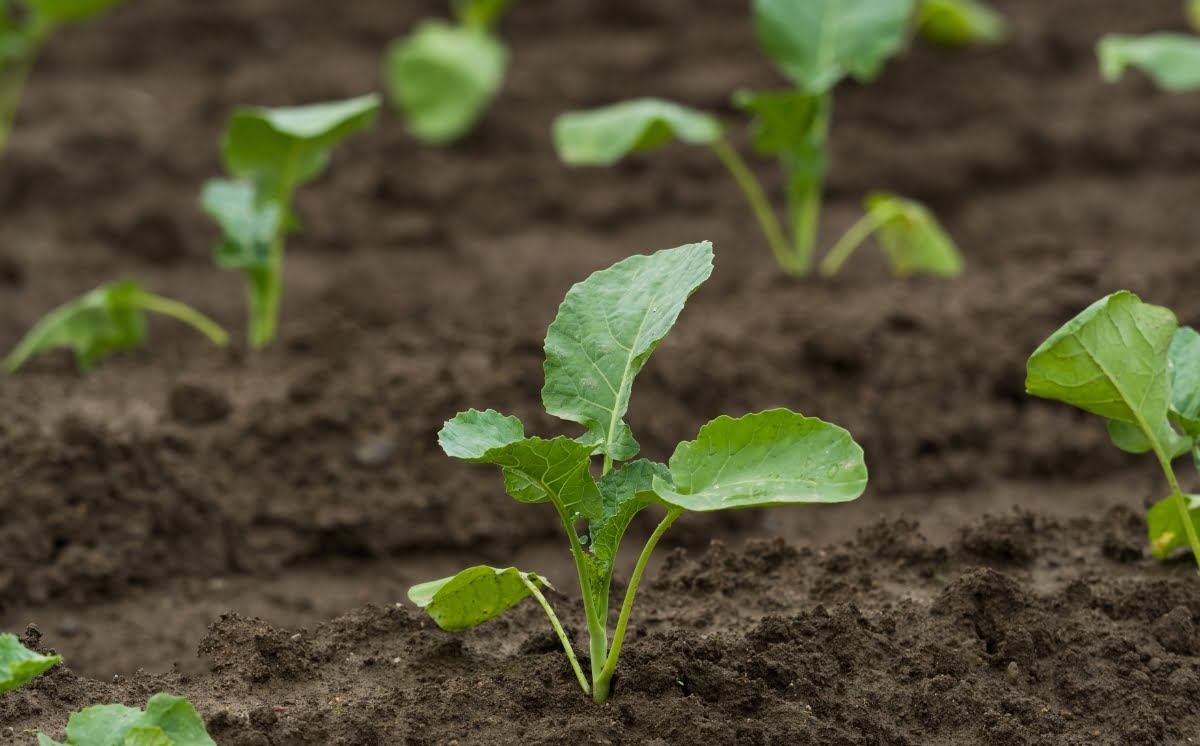Home>Types of Gardening>Edible Gardening>When To Thin Out Seedlings


Edible Gardening
When To Thin Out Seedlings
Published: January 2, 2024
Knowing when to thin out seedlings is crucial for successful edible gardening. Learn the best time and techniques to ensure healthy growth and abundance in your garden.
(Many of the links in this article redirect to a specific reviewed product. Your purchase of these products through affiliate links helps to generate commission for Chicagolandgardening.com, at no extra cost. Learn more)
Table of Contents
Introduction
Welcome to the exciting world of edible gardening! Whether you have a spacious backyard or a small balcony, growing your own food can be a rewarding and fulfilling experience. One important aspect of successful gardening is thinning out seedlings, a practice that ensures healthy plant growth and maximizes yield.
Thinning out seedlings involves removing some of the young plants to create more space for the remaining ones to grow and develop properly. This process allows plants to have adequate access to nutrients, sunlight, and water, ultimately preventing overcrowding and competition for resources.
Many novice gardeners may underestimate the importance of thinning out seedlings, but it plays a crucial role in promoting strong and robust plants. In this article, we will explore the reasons why thinning out seedlings is essential, the factors to consider, the signs that indicate when it’s time to thin, and the best techniques to employ for optimal results.
By understanding and implementing thinning practices, you can ensure healthy plant growth, increase the quality and quantity of your harvest, and create an aesthetically pleasing garden space.
Importance of Thinning Out Seedlings
Thinning out seedlings is a crucial step in the journey of a successful edible garden. While it may seem counterintuitive to remove some of the young plants you have carefully nurtured, it is essential for several reasons.
Firstly, thinning out seedlings allows the remaining plants to have ample space to grow and flourish. Overcrowding can lead to stunted growth and a lack of proper airflow, which can make plants more susceptible to diseases and pests. By creating enough space between each plant, you are providing them with the opportunity to spread their roots, access nutrients, and develop strong stems and foliage.
Furthermore, thinning helps to reduce competition for essential resources such as water, sunlight, and nutrients. When seedlings are densely packed together, they often have to compete for these limited resources. This can lead to uneven growth and weaker plants. By thinning out the weaker seedlings, the remaining ones have a better chance of thriving and producing a bountiful harvest.
Thinning out seedlings also contributes to the overall aesthetics of your garden. A well-spaced garden not only looks visually appealing, but it also allows for easier access for gardening tasks such as weeding, watering, and harvesting. A well-organized and orderly garden not only pleases the eye but also enhances the overall gardening experience.
Another important reason to thin out seedlings is to prevent diseases and pests from spreading quickly. When plants are crowded together, it creates a favorable environment for the development and spread of diseases and pests. Adequate spacing allows air to circulate freely, decreasing humidity and reducing the risk of fungal infections and pest infestations.
Overall, thinning out seedlings is vital for the long-term success of your edible garden. It promotes vigorous growth, reduces competition, enhances the aesthetic appeal, and minimizes the risk of diseases and pests. By investing time and effort into thinning your seedlings, you are setting the stage for a thriving, productive, and beautiful garden.
Factors to Consider
When it comes to thinning out seedlings, there are a few important factors to consider to ensure you make the right decisions for your plants. These factors will help you determine the ideal number of seedlings to keep and the appropriate spacing between them.
The first factor to consider is the specific requirements of each plant variety. Different plants have different space needs, and it is crucial to understand each plant’s growth habits and recommended spacing. Some plants, like carrots or radishes, need ample space for their root development, while others, like lettuce or herbs, can be planted closer together.
Another important factor is the planting method you used. If you sowed your seeds directly in the ground or in a large container, thinning might be necessary to avoid overcrowding. However, if you started your seeds indoors in trays or cells, your seedlings may already have sufficient space and may not require thinning. Understanding the planting method you used will help you determine if thinning is necessary.
The current stage of the seedlings is also crucial in deciding when to thin. Seedlings need to be at a certain size and stage of development before thinning is effective. It is recommended to wait until the seedlings have at least two to three true leaves before thinning them out. At this stage, you can better assess which seedlings are stronger and more likely to thrive.
Considering the available space in your garden is also important. Take into account the size and layout of your garden beds or containers. Ensure that there is enough space between each plant to promote proper air circulation and prevent overcrowding. It’s important to strike a balance between providing enough space for each plant while maximizing the use of available space.
Lastly, consider your goals and preferences as a gardener. Are you aiming for a more bountiful harvest or a visually pleasing garden? Understanding your objectives will help you determine the appropriate number of seedlings to keep. It is natural for gardeners to feel reluctant to thin out their beloved seedlings, but keeping too many can lead to poor plant health and lower overall productivity.
By considering these factors—plant requirements, planting method, stage of seedlings, available space, and personal goals—you can make informed decisions when thinning out your seedlings. Striking the right balance will ensure healthy plant growth, maximize space utilization, and increase the overall success of your edible garden.
Signs that Seedlings Need Thinning
Knowing when to thin out your seedlings is crucial to ensure their optimal growth and development. By keeping an eye out for certain signs, you can identify when it’s time to thin and promote the health and productivity of your plants.
One of the most obvious signs that seedlings need thinning is overcrowding. If your seedlings are growing densely and competing for space, it is a clear indication that thinning is necessary. Look for seedlings that are touching or almost touching each other. This overcrowding restricts the access to light, air, and nutrients that each plant needs to thrive.
Another sign to watch out for is stunted growth. When seedlings are crowded, their growth becomes stunted as they compete for limited resources. If you notice that some of your seedlings are lagging behind in growth compared to others, it’s a sign that they need more room to grow. Thinning will allow the remaining plants to receive the necessary resources and promote healthier, more robust growth.
Uneven distribution of foliage is another indicator that thinning is required. If you observe that some seedlings have larger leaves and more foliage compared to others, it is a sign that those plants have more access to sunlight and nutrients. Thinning out the overcrowded areas will help promote a more even distribution of foliage and encourage balanced growth throughout your garden.
Root congestion is yet another sign that seedlings need thinning. When seedlings become root-bound, it restricts their ability to access water and nutrients from the soil. If you gently lift a seedling and notice that its roots are tightly coiled or matted, it’s a clear indication that the plant needs more space for its roots to expand and grow. Thinning out the surrounding seedlings will provide the necessary space for proper root development.
Finally, if you notice any signs of nutrient deficiencies or diseases among your seedlings, it may be an indication of overcrowding. Lack of proper air circulation and increased moisture levels in densely packed seedlings can create a favorable environment for disease development. Thin out the affected areas to improve airflow and reduce the risk of diseases spreading throughout your garden.
By keeping an eye out for overcrowding, stunted growth, uneven foliage distribution, root congestion, and signs of nutrient deficiencies or diseases, you can identify when it’s time to thin out your seedlings. Addressing these signs promptly will ensure the healthy growth and productivity of your plants.
How to Thin Out Seedlings
Thinning out seedlings may sound intimidating, but with a few simple steps, you can easily master this essential gardening practice. Here’s a step-by-step guide on how to effectively thin out your seedlings:
- Prepare the seedlings: Ensure that the seedlings are at the appropriate stage for thinning, typically when they have developed two to three true leaves. This allows you to accurately assess the health and strength of each plant.
- Select the seedlings to remove: Identify the weaker, smaller, or less healthy seedlings for removal. Aim to keep the strongest and most vigorous plants, as they will have a higher chance of growing into healthy and productive plants.
- Prepare the planting area: Clear the surrounding area by gently removing any mulch or organic matter. This will provide you with a clean working space and make it easier to access and remove the seedlings.
- Gently lift and remove seedlings: Carefully lift the seedlings you have selected for removal from the soil. Use a small garden trowel or your fingers to gently loosen the soil around their roots. Take care not to disturb the roots of the remaining seedlings.
- Space the remaining seedlings: Create adequate spacing between the remaining seedlings by carefully transplanting them to their new positions. Dig a hole for each seedling, ensuring it is wide and deep enough to accommodate the roots without bending or crowding them.
- Water and mulch: After thinning, water the remaining seedlings thoroughly to help them recover from the transplant shock. Applying a layer of organic mulch around the base of the seedlings will help retain moisture, suppress weeds, and protect the roots.
- Monitor and care for the seedlings: Keep a close eye on the thinned seedlings and the remaining ones as they continue to grow. Provide regular watering, adequate sunlight, and any necessary fertilization to support their healthy development.
Remember, thinning out seedlings is a natural part of the gardening process. While it may be difficult to remove some of your well-tended seedlings, it is essential for the overall health and productivity of your garden. By following these steps, you can ensure that the remaining seedlings have the necessary space and resources to thrive and provide you with a bountiful harvest.
Best Time to Thin Out Seedlings
The timing of thinning out seedlings is critical to ensure the success of this practice. You want to choose the right moment when seedlings are at an optimal stage of growth and development. Here are some guidelines to determine the best time for thinning out seedlings:
As a general rule, it is recommended to wait until the seedlings have developed two to three true leaves before thinning. True leaves are the leaves that appear after the initial seed leaves or cotyledons. These true leaves indicate that the seedlings have established a strong root system and are better equipped to handle the stress of thinning.
Thinning too early can disrupt the growth of the remaining seedlings and may not give an accurate representation of which plants are the strongest. On the other hand, thinning too late can lead to overcrowding, competition for resources, and a less productive garden overall.
It’s important to thin seedlings during a period of mild weather conditions and moderate temperatures. Avoid thinning during extreme heat or cold as this can increase the stress on the plants. Ideally, choose a day with overcast skies or during the cooler parts of the day to minimize transplant shock and give the seedlings the best chance to recover.
In terms of the growth stage of the seedlings, thinning is typically done when they are around 2-3 inches (5-7.5 cm) tall. At this stage, the seedlings have developed enough to be easily handled and transplanted, but they are still small enough to minimize root disturbance.
Additionally, consider the specific requirements of the plant variety. Some plants may benefit from earlier thinning, while others may require a bit more growth before thinning. Refer to the seed packet instructions or gardening resources specific to the plants you are growing for guidance on the ideal time to thin.
Remember, thinning is an ongoing process throughout the growing season. As your plants continue to grow, periodically check for overcrowding and thin out as needed. Regular thinning will help ensure that the remaining seedlings have the space and resources needed to thrive and produce a successful harvest.
By choosing the right moment – when seedlings have developed true leaves, during mild weather, at a suitable growth stage, and considering the specific requirements of the plants – you can determine the best time to thin out your seedlings and set the foundation for a healthy and productive garden.
Tools and Techniques for Thinning
Thinning out seedlings requires minimal tools and can be done with ease using a few simple techniques. Here are some tools and techniques you can use for effective thinning:
Garden Trowel: A small handheld garden trowel is a versatile tool for thinning out seedlings. It allows you to gently lift the unwanted seedlings from the soil without disturbing the surrounding plants. Choose a trowel with a sharp edge for precise and clean removal.
Garden Scissors or Pruners: In some cases, especially for densely packed seedlings, you may need to snip off the unwanted seedlings at ground level to avoid disrupting the roots of the remaining plants. Use clean and sharp garden scissors or pruners to carefully remove the seedlings.
Thinning Seedling Multiples: When seedlings emerge in clusters, such as with lettuce or herbs, thinning can be done by carefully separating the cluster into individual seedlings. Gently tease apart the soil to expose the individual plants and carefully lift and transplant them into their desired positions.
Transplanting Method: Instead of removing the unwanted seedlings, you can opt to carefully transplant them to another area of your garden. Dig a small hole in the new location and transplant the seedling, ensuring it is at the same depth it was originally planted. Water it thoroughly to help it establish in its new spot.
Square Foot Gardening: Square Foot Gardening is a technique where plants are spaced closely together in square-foot sections. Instead of thinning out seedlings, this method involves planting the intended number of seeds in each square foot, eliminating the need for thinning. This technique is particularly useful for small space gardens or when maximizing space is a priority.
Follow Spacing Guides: Some seed packets or plant labels provide recommended spacing guidelines for specific plant varieties. These guides can help you determine the appropriate spacing between seedlings when thinning. Follow the recommended spacing to allow the remaining plants to grow and spread properly.
Regular Monitoring: Regularly monitor your seedlings to identify signs of overcrowding. Check for seedlings that are touching or nearly touching each other and those that appear weaker or less healthy. By identifying overcrowded areas early on, you can thin out seedlings before they become too dense and cause issues.
Remember, thinning out seedlings may seem daunting at first, but with the right tools and techniques, it becomes a straightforward process. Whether you use a garden trowel, scissors, or opt for transplanting, thinning will provide the remaining seedlings with the space and resources they need to thrive and produce a bountiful harvest.
Common Mistakes to Avoid
Thinning out seedlings may seem like a simple task, but there are a few common mistakes that gardeners should avoid to ensure the best results. By being aware of these mistakes, you can prevent potential issues and promote the healthy growth of your plants. Here are some common mistakes to avoid when thinning out seedlings:
1. Waiting Too Long: One of the most common mistakes is waiting too long to thin out seedlings. If you allow the seedlings to become overcrowded, they will compete for resources, leading to stunted growth and a lower overall yield. Be vigilant and thin out the seedlings when they are at the appropriate stage to prevent overcrowding.
2. Removing Strong Seedlings: It’s important to accurately assess which seedlings to remove and which to keep. Sometimes, gardeners mistakenly remove the healthier, stronger seedlings, thinking that they are doing the right thing. Take the time to carefully observe the growth and health of each seedling before making the decision to thin.
3. Disturbing the Roots: When thinning seedlings, it’s crucial to minimize root disturbance as much as possible. The roots are sensitive and delicate, and excessive disruption can cause stress to the plants. When lifting or transplanting seedlings, handle them with care to preserve their root systems.
4. Thinning During Unsuitable Weather: Thin out seedlings during mild weather conditions to minimize stress on the plants. Avoid thinning during extreme heat or cold, as this can increase the risk of transplant shock. Choose a day with moderate temperatures and overcast skies, if possible.
5. Underestimating Spacing Requirements: It’s essential to follow the recommended spacing guidelines for each plant variety. Underestimating the spacing requirements can lead to overcrowding and hinder the growth of your plants. Refer to seed packets or gardening resources to ensure you provide sufficient space for each seedling.
6. Over-Thinning or Under-Thinning: Striking the right balance is crucial when thinning out seedlings. Over-thinning can result in wasted space and leave gaps in your garden bed, while under-thinning can lead to overcrowding and decreased productivity. Aim to remove just enough seedlings to create adequate spacing without leaving too much empty space.
7. Neglecting Aftercare: Thinning out seedlings is not the end of the process. It’s important to provide proper aftercare to the remaining plants. Water them adequately and monitor their progress regularly. Continue to provide the necessary care, including proper watering, fertilization, and protection from pests and diseases.
Avoiding these common mistakes when thinning out seedlings will ensure healthier and more productive plants. By thinning at the right time, preserving root systems, following spacing guidelines, and providing proper aftercare, you can set the stage for a successful and thriving garden.
Conclusion
Thinning out seedlings is an important practice in edible gardening that contributes to the overall success of your plants. By creating adequate spacing between seedlings, you promote healthy growth, minimize competition for resources, and prevent overcrowding. This leads to stronger, more robust plants and ultimately a more productive and bountiful harvest.
Throughout this article, we have explored the importance of thinning out seedlings, the factors to consider, signs that indicate when thinning is necessary, and the best techniques to employ. We have also discussed common mistakes to avoid to ensure the best results.
Remember to consider the specific requirements of each plant variety, the stage of the seedlings, the available space in your garden, and your personal goals as a gardener. By doing so, you can make informed decisions when thinning out your seedlings and create an environment that promotes optimal growth and productivity.
Thinning out seedlings may require a bit of time and effort, but the benefits far outweigh the challenges. The healthier, more vigorous plants that result from thinning will reward you with a beautiful and abundant harvest.
So, don’t hesitate to thin out your seedlings when the time is right. Embrace this essential gardening practice, and watch your edible garden thrive as you create the ideal conditions for your plants to flourish and provide you with fresh, homegrown produce.
